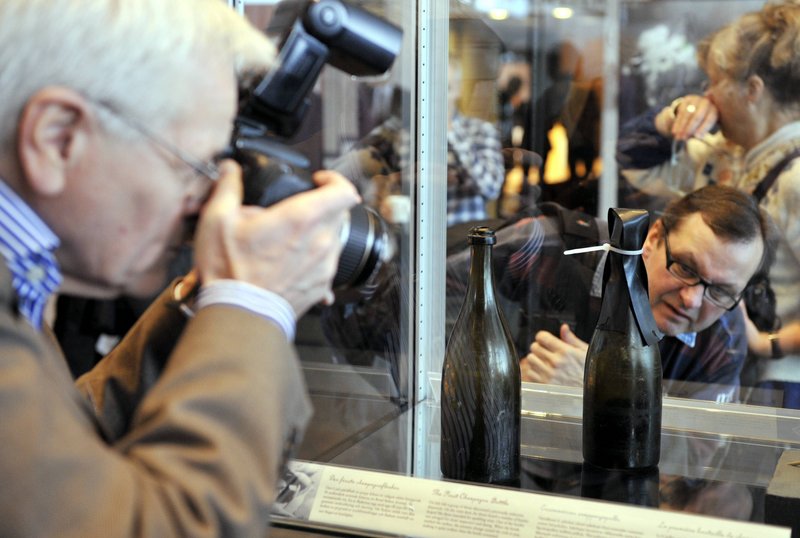MARIEHAMN, Finland – Here’s what nearly 200-year-old champagne salvaged from the bottom of the sea tasted like to wine experts: lime blossoms, coffee, chanterelles.
Here’s what it tasted like to me: yeast, honey and — dare I say it? — a hint of manure.
The antique bubbly wasn’t very bubbly after its long sleep in the cold and murky Baltic Sea. But I couldn’t help feeling a thrill Wednesday as I took a sip of history captured in that cloudy, golden liquid.
After all, I was drinking what could be the world’s oldest champagne. And some of the unopened bottles that are to be auctioned might go for as much as $70,000 apiece.
The shipwreck was discovered in July near the Aland Islands — a wind-swept archipelago between Sweden and Finland — by a group of divers. Researchers say the ship was probably en route from northern Germany to the west coast of Finland with its prestigious cargo when it sank, sometime in the first half of the 1800s.
Connoisseurs haven’t been able to date precisely the 168 bottles raised from the shipwreck. All they can say is they are from the early 19th century and astonishingly well-preserved.
I was among 20 people invited to the tasting in Mariehamn, the capital of the island group. After a presentation of the diving operation, an archaeologist wearing white gloves presented two bottles to champagne specialist Richard Juhlin — a Veuve Clicquot and a Juglar, a now-defunct champagne house.
Juhlin sampled both in front of journalists.
“Great! Wonderful!” he exclaimed. Then he paused, soaking in the flavors.
“What strikes you the most is that it’s such an intense aroma,” he continued. “It’s so different from anything you’ve tasted before.”
He found hues of chanterelles, honey, orange and peach in the Juglar; linden blossoms and lime peels in the Veuve Clicquot.
We were given a choice to sample either the Veuve Clicquot or the Juglar.
Easy, I thought. I’ll go for the Juglar, since that brand doesn’t exist anymore.
I raised a wine glass containing about an inch (a few centimeters) of Champagne, which contained tiny pieces of cork but very little fizz. A mushroomy-yeasty flavor soon gave way to sweet notes of honey — much like a sugary dessert wine.
That’s not unexpected — champagne in the 19th century was a lot sweeter than it is today.
A standard bottle of champagne now has about 9 grams of sugar, said Stephane Gerschel, a spokesman for Veuve Clicquot, founded in 1772. In the 1830s, the house used more than 100 grams of sugar per bottle — and even that wasn’t sweet enough for some.
“In Russia, the trend was to serve champagne with a spoonful of sugar,” Gerschel said.
Tastes have changed dramatically since then, and some contemporary champagnes are lauded for their bone-dry finish.
Copy the Story Link
Send questions/comments to the editors.



Success. Please wait for the page to reload. If the page does not reload within 5 seconds, please refresh the page.
Enter your email and password to access comments.
Hi, to comment on stories you must . This profile is in addition to your subscription and website login.
Already have a commenting profile? .
Invalid username/password.
Please check your email to confirm and complete your registration.
Only subscribers are eligible to post comments. Please subscribe or login first for digital access. Here’s why.
Use the form below to reset your password. When you've submitted your account email, we will send an email with a reset code.